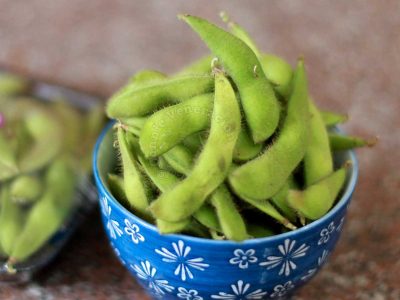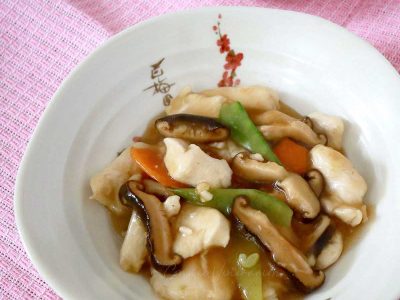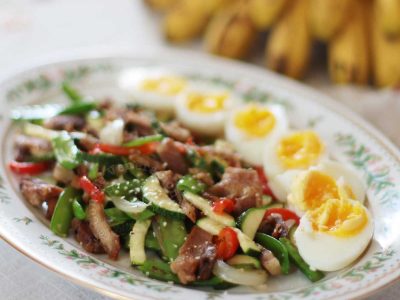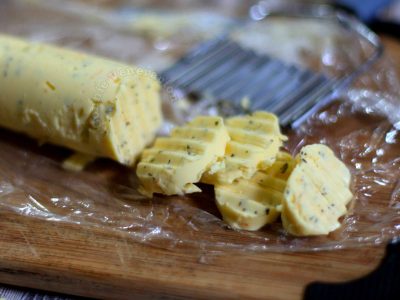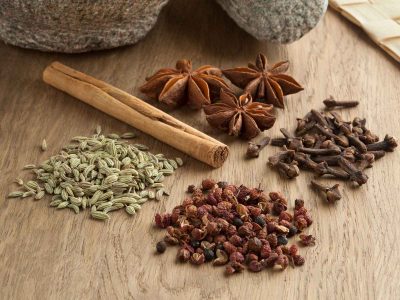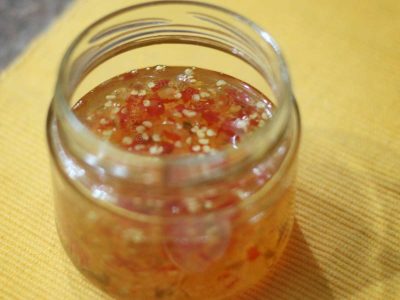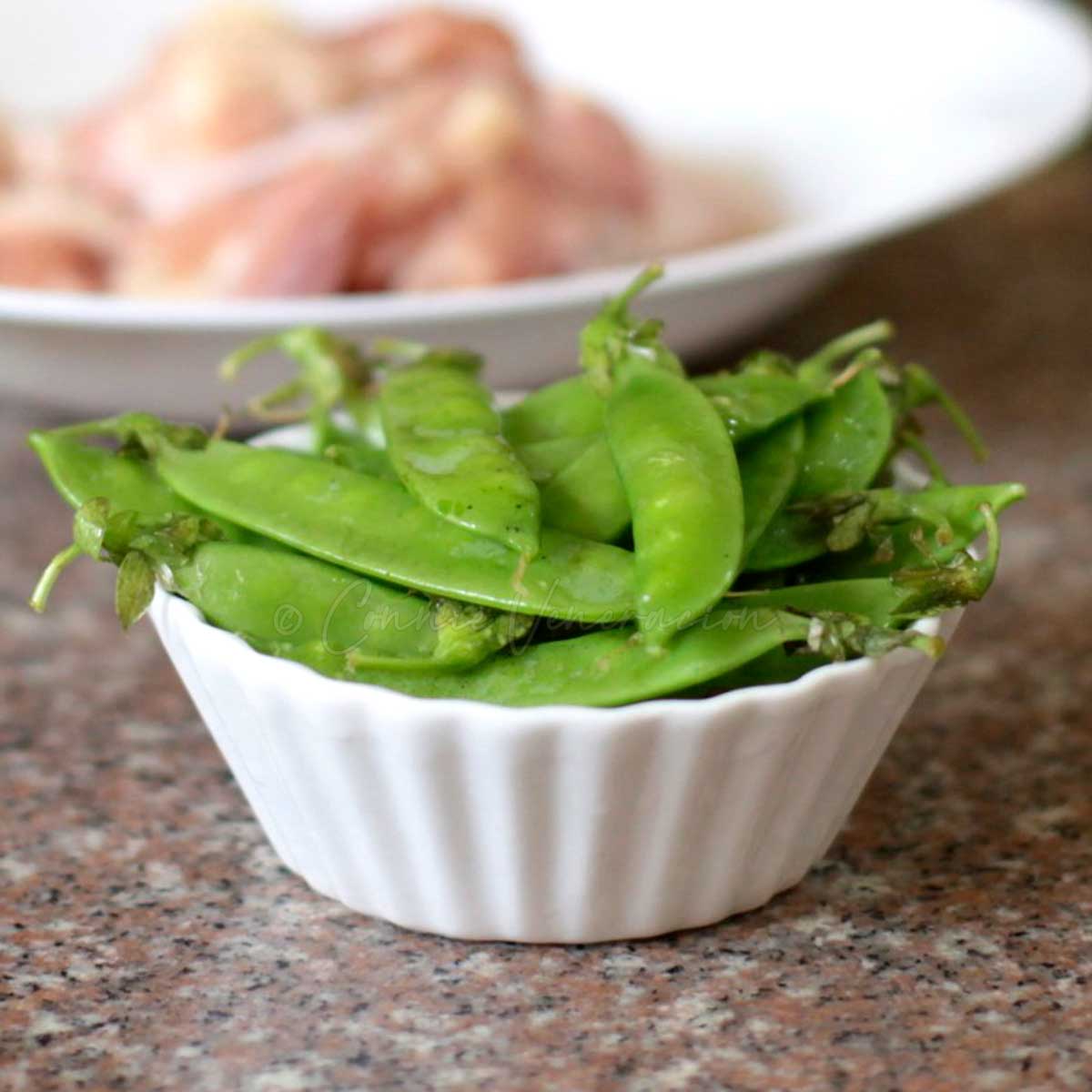
First, let’s differentiate.
Peas: small, round and green; sold fresh, frozen, dried or canned.
Snow peas: edible whole pods with unripened peas inside; pods rather flat; sold fresh or canned; called chicharo or sitsaro in the Philippines.
Snap peas: like snow peas, edible whole pods with unripened peas inside; pods rounder than snow peas; sold fresh or canned.
Mangetout: a French term for “eat all” refers to both snap peas and snap peas and is descriptive of the characteristics of both of having edible pods.
Don’t confuse any of the above with edamame which is the Japanese name for fresh soy bean with inedible pods.
How to cook edamame (fresh soy beans in pods)
What do soy sauce, soy milk and tofu have in common? They are all made from soy beans.
Why the enumeration? Because grocery labels can get confusing. These snow peas, for instance, were labeled as Chinese sweet peas at the neighborhood grocery. Huh? Sweet pea is a totally different plant cultivated for its flowers and its seeds can be toxic.
In the Philippines, snow peas are more common than snap peas. The pods are used in stir fried dishes and is especially popular as one of several vegetables for pancit canton, a catch-all name for lo mein and chow mein.
Locally known as chicharo or sitsaro, they are sold fresh and are available all year round. The best ones are small, no more than two-and-a-half inches in length.
Why does the length matter? Because, most times, it is a gauge of the maturity of the pods. The younger and smaller ones are more tender and, often, sweeter. The larger ones can be pretty fibrous.
How are snow peas prepared?

First, you string them. “String” refers to the string-like tough fibrous part that runs along both sides of each pod. After snapping off one end, hold it, move your hand sideways and pull off the stringy side. Do that with both ends and both sides. Once you have performed that operation for all the pods, they are ready for cooking.
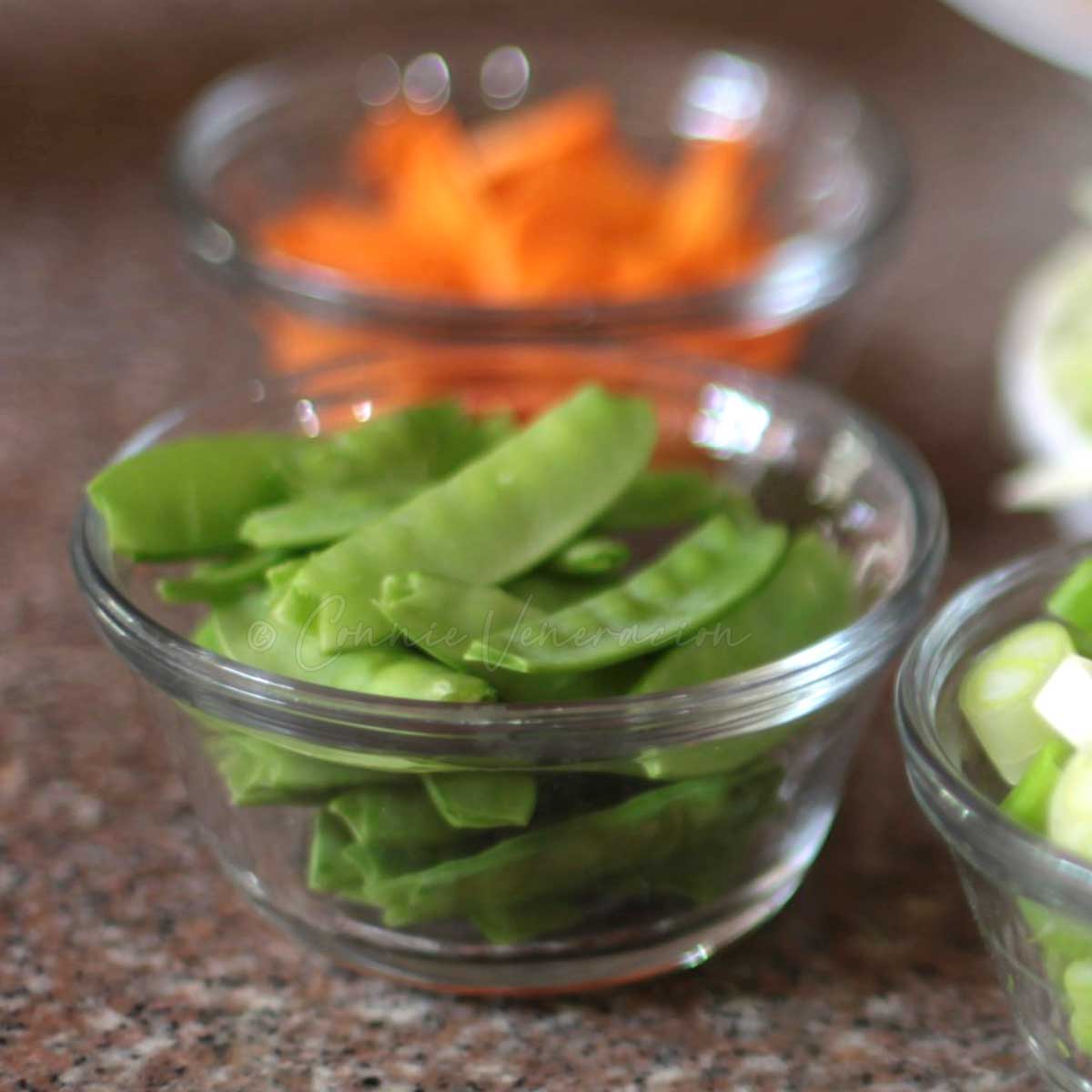
How long does it take to cook snow peas? It depends on the maturity. The more mature ones will require a longer cooking time. The best snow peas will cook in a few minutes.

